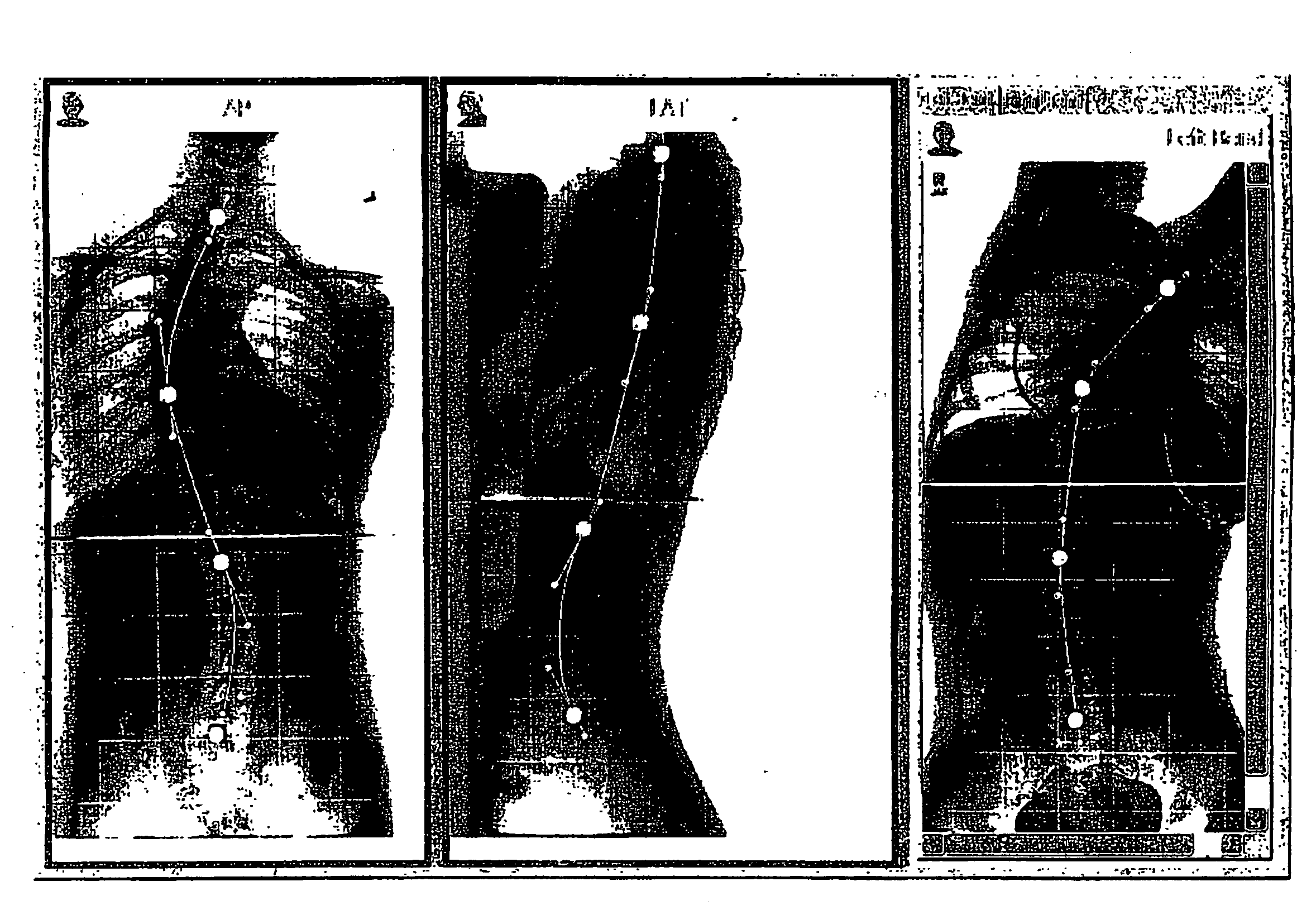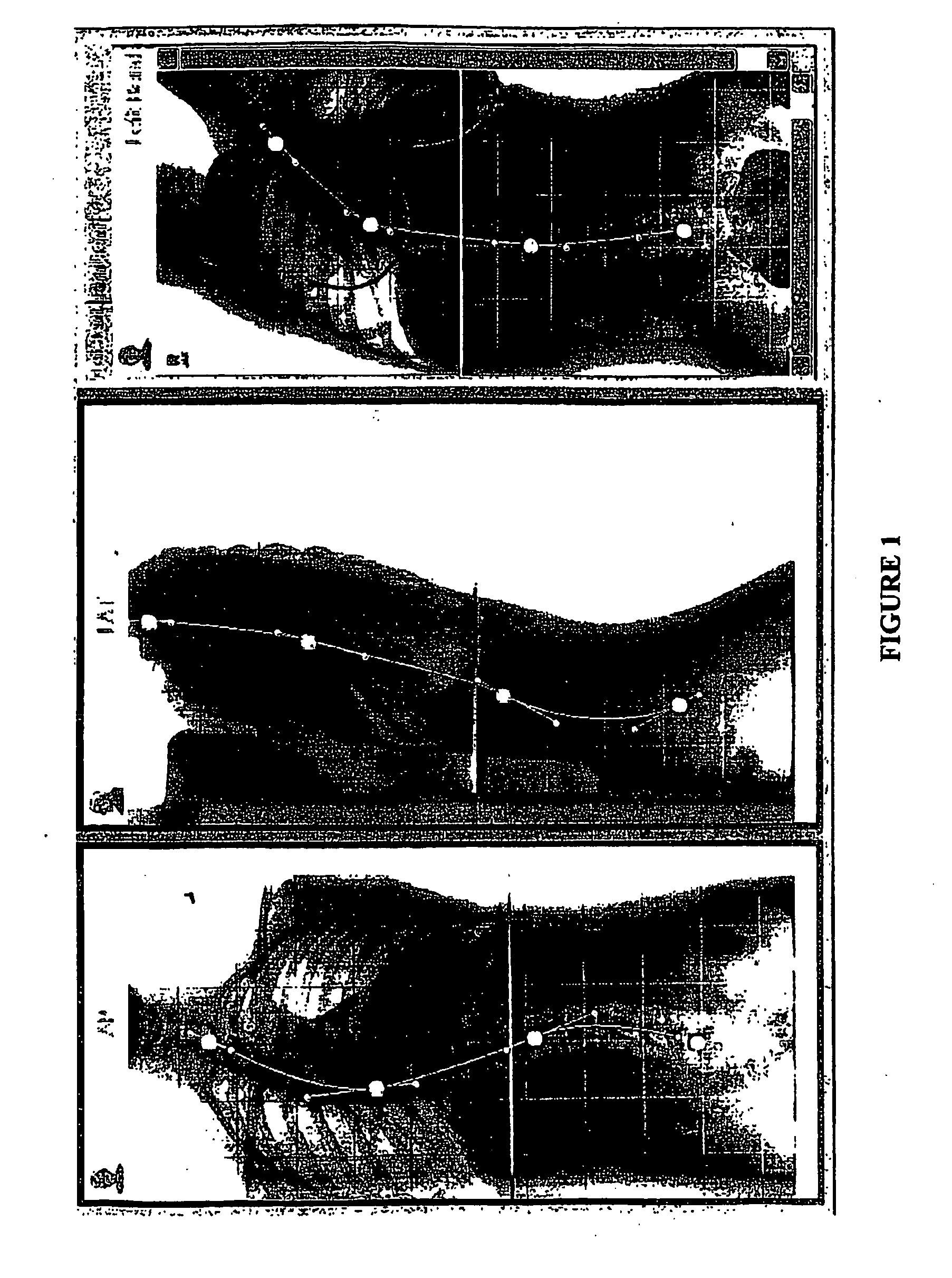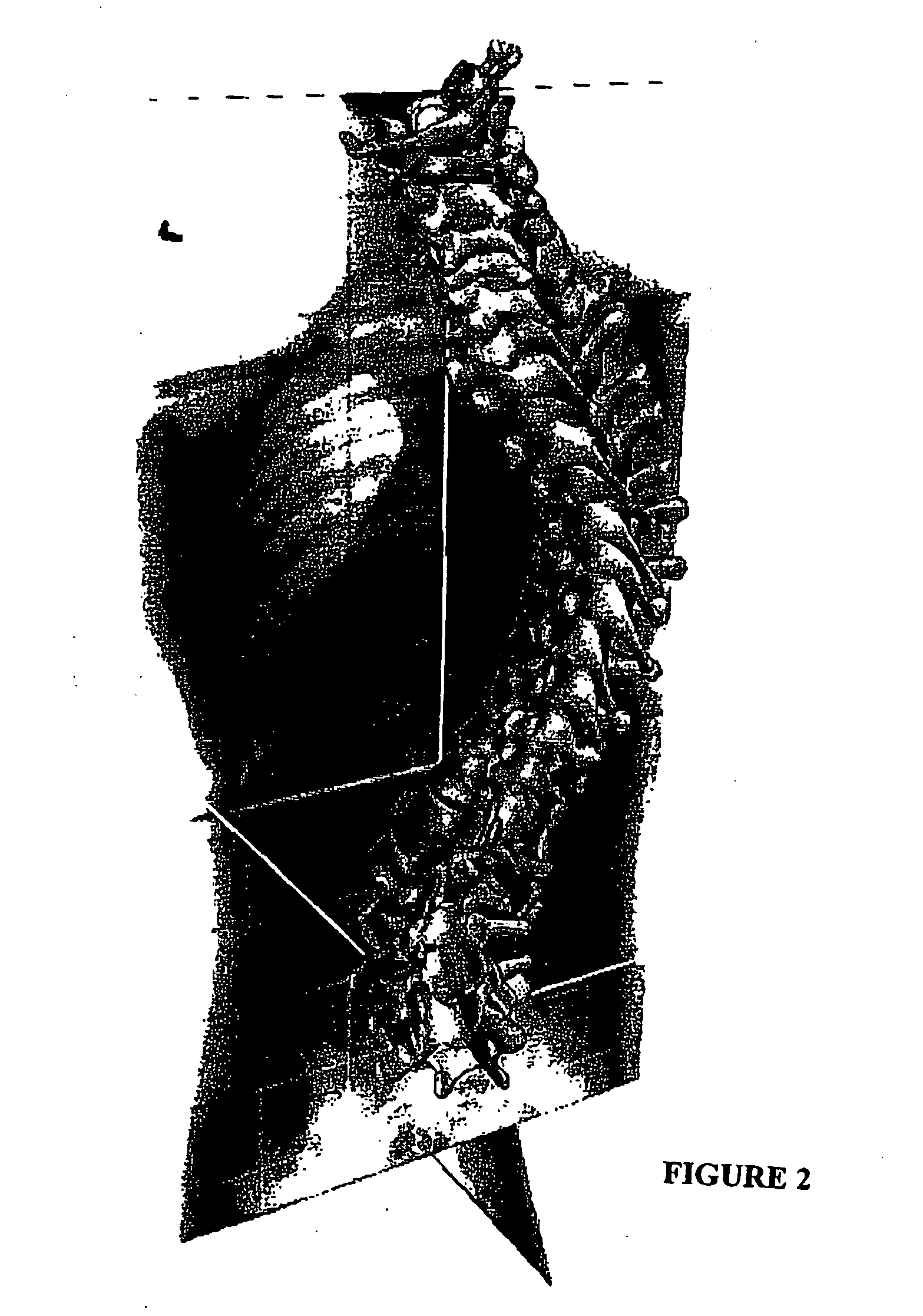Systems and methods for multi-dimensional characterization and classification of spinal shape
a multi-dimensional characterization and classification technology, applied in the field of systems and methods for multi-dimensional characterization and classification of spinal shapes, can solve the problems of poor resolution of design of surgical corrective instruments, high personnel intensity, and inability to satisfactorily address primary problems, and achieve accurate and automatic reproduction of three-dimensional shapes
- Summary
- Abstract
- Description
- Claims
- Application Information
AI Technical Summary
Benefits of technology
Problems solved by technology
Method used
Image
Examples
Embodiment Construction
[0020]The present invention provides systems and methods for addressing some of the conventional problems associated with diagnosing, mapping and classifying spinal deformities. Significant treatment benefits will be realized with, according to exemplary embodiments of the present invention, a computer-aided system for three-dimensional characterization and classification of spinal deformity as per existing clinical practice. Exemplary systems and methods according to the present invention enable, for example, three-dimensional reconstruction of the spinal geometry from two-dimensional radiographs; automated classification of the spinal geometry according to the Lenke scheme; and statistical assessment of the sensitivity of the classification to inter-observer reliability and intra-observer reproducibility. As a tool for preoperative evaluation of treatment outcome, for example, integrated with a database of shared pre- and postoperative spinal geometries, exemplary embodiments of t...
PUM
 Login to View More
Login to View More Abstract
Description
Claims
Application Information
 Login to View More
Login to View More - R&D
- Intellectual Property
- Life Sciences
- Materials
- Tech Scout
- Unparalleled Data Quality
- Higher Quality Content
- 60% Fewer Hallucinations
Browse by: Latest US Patents, China's latest patents, Technical Efficacy Thesaurus, Application Domain, Technology Topic, Popular Technical Reports.
© 2025 PatSnap. All rights reserved.Legal|Privacy policy|Modern Slavery Act Transparency Statement|Sitemap|About US| Contact US: help@patsnap.com



